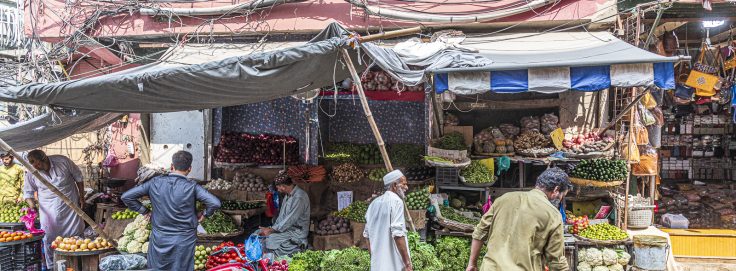
Search
Pakistan’s MPI Journey: Mapping progress and policy impact

Over the past two decades, Pakistan has transformed its poverty reduction approach, using the Multidimensional Poverty Index (MPI) to guide policy decisions and target interventions more effectively. Rabia Awan has served the Pakistan Bureau of Statistics in different capacities for nearly 25 years. In this interview, she shares her insights on Pakistan’s experience with the Multidimensional Poverty Index (MPI), the challenges faced in creating and utilising data, and the lessons learned throughout the process.
Can you tell us about the MPI in Pakistan? How was it developed, and what has the process been since the first time you produced it?
Initially, Pakistan, like many other countries, focused on income-based poverty reporting using the Household Integrated Economic Survey. However, we also conducted a district-level survey called the Pakistan Social and Living Standards Measurement (PSLM) survey. This survey, launched in 2004–2005, included questions on education, health, demographics, living standards, and access to facilities. Over time, we conducted six iterations of this survey.
In 2014, OPHI contacted the Ministry of Planning & Special Initiatives through UNDP with a proposal to develop an MPI. They agreed and accordingly an MPI was calculated for the first time in 2015 with back series also estimated.
This report was instrumental in identifying disparities between provinces and districts, guiding resources toward areas with the highest deprivations across multiple dimensions. It marked a milestone in directing poverty alleviation efforts.
A technical committee was then constituted for poverty estimation by the Ministry of Planning, Development and Special Initiatives, which calculated the next MPI based on 2019–20 data.
The Pakistan Bureau of Statistics (PBS) is a department of the Ministry of Planning, Development and Special Initiatives. The provision of data is the mandate of PBS, while the estimation of poverty is the responsibility of the Ministry. The estimation is executed through the technical committee, where PBS is also member.
How has the Census contributed to guiding poverty reduction efforts?
Recently, the Pakistan Bureau of Statistics conducted a digital Census covering a population of 250 million people. This Census collected data on housing, living standards, education (enrollment, literacy, and out-of-school children), and housing conditions. Unfortunately, health—one of the MPI’s three dimensions—was not included in the Census. As a result, while we cannot calculate the full MPI from Census data, we can use the methodology to analyse deprivations in education and living standards. This partial analysis is still valuable for policymaking and targeting resources effectively.
The main challenge with data is ensuring its utilisation for informed decision-making. Policymakers often underutilise the data collected. By presenting it through heat maps and visualisations, we aim to clearly illustrate disparities and actionable insights.
What challenges have you faced in creating data for new dimensions and improving data quality?
OPHI has been a great support in building capacity for our statistical and planning departments. People are now familiar with the methodology for calculating MPI. However, as new dimensions are introduced or staff changes occur, there’s an ongoing need for refresher courses and capacity building.
One key challenge we encountered was the comparability of indicators. Earlier surveys had different questions, forcing us to drop some indicators. For example, we initially calculated MPI with 15 indicators, but it now uses 14. Consistency is critical for trend analysis, and any changes can disrupt comparability.
Additionally, large-scale data collection often brings quality issues, which we are addressing. However, MPI itself is less controversial than income-based poverty measures, as it focuses on non-income dimensions like education and living standards. This has made it easier for policymakers and the public to accept MPI results.
What efforts are being made to enhance access to data for policymakers?
Survey data is freely available on our website, but Census data is more restricted to protect individual confidentiality. To bridge the gap, we plan to create a portal where policymakers can instantly access visualised data for their districts, including maps and figures. This will empower them to make evidence-based decisions more efficiently.
What lessons would you like others to learn from Pakistan’s MPI experience?
Pakistan’s MPI process has been inclusive and consultative. For instance, we worked closely with Professor Sabina Alkire during the early phases.
Now, however, we are self-sufficient in calculating and reporting MPI. This independence reflects the institutionalisation of MPI within the Pakistan Bureau of Statistics.
It is essential for every country to institutionalise MPI calculation within a dedicated organisation to ensure sustainability. While external partners like OPHI and UNDP are invaluable for technical advice, relying solely on them does not build local capacity.
We are proud to say that we have transitioned from dependence to autonomy, which is a significant achievement for Pakistan.
This article was published in Dimensions 17
















